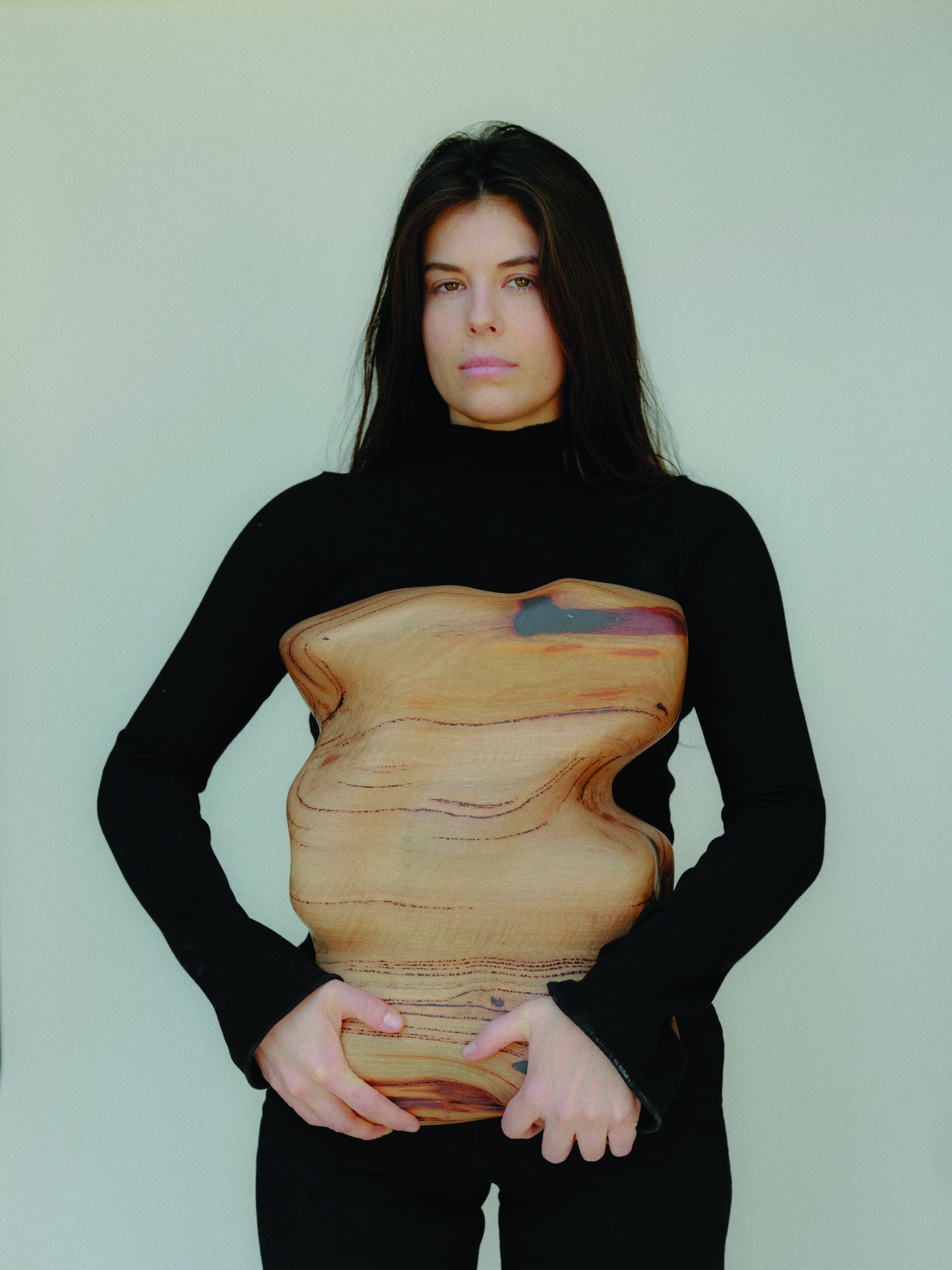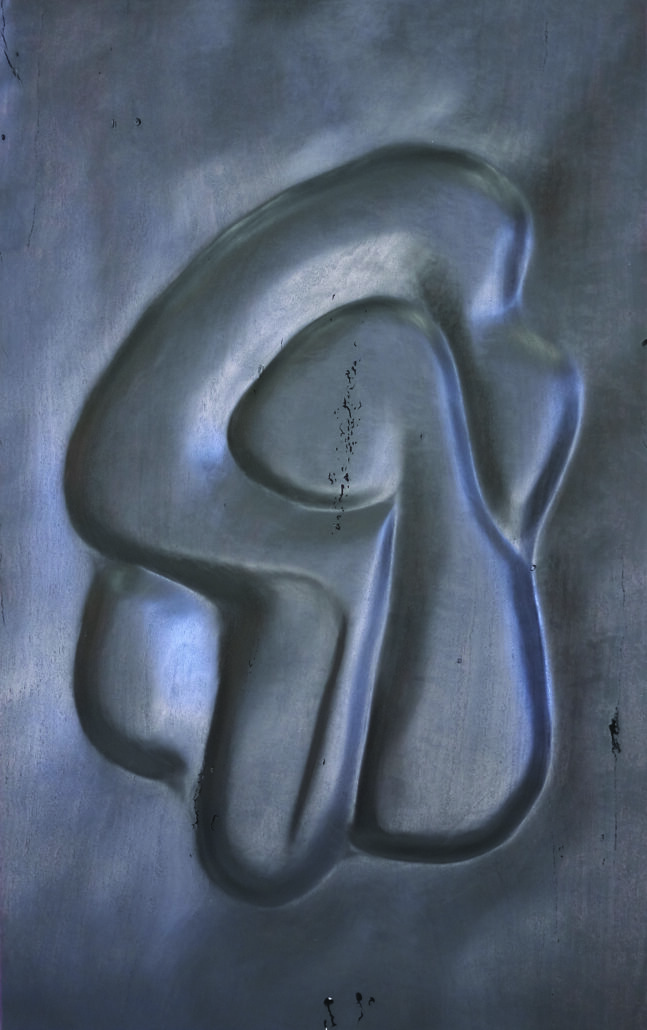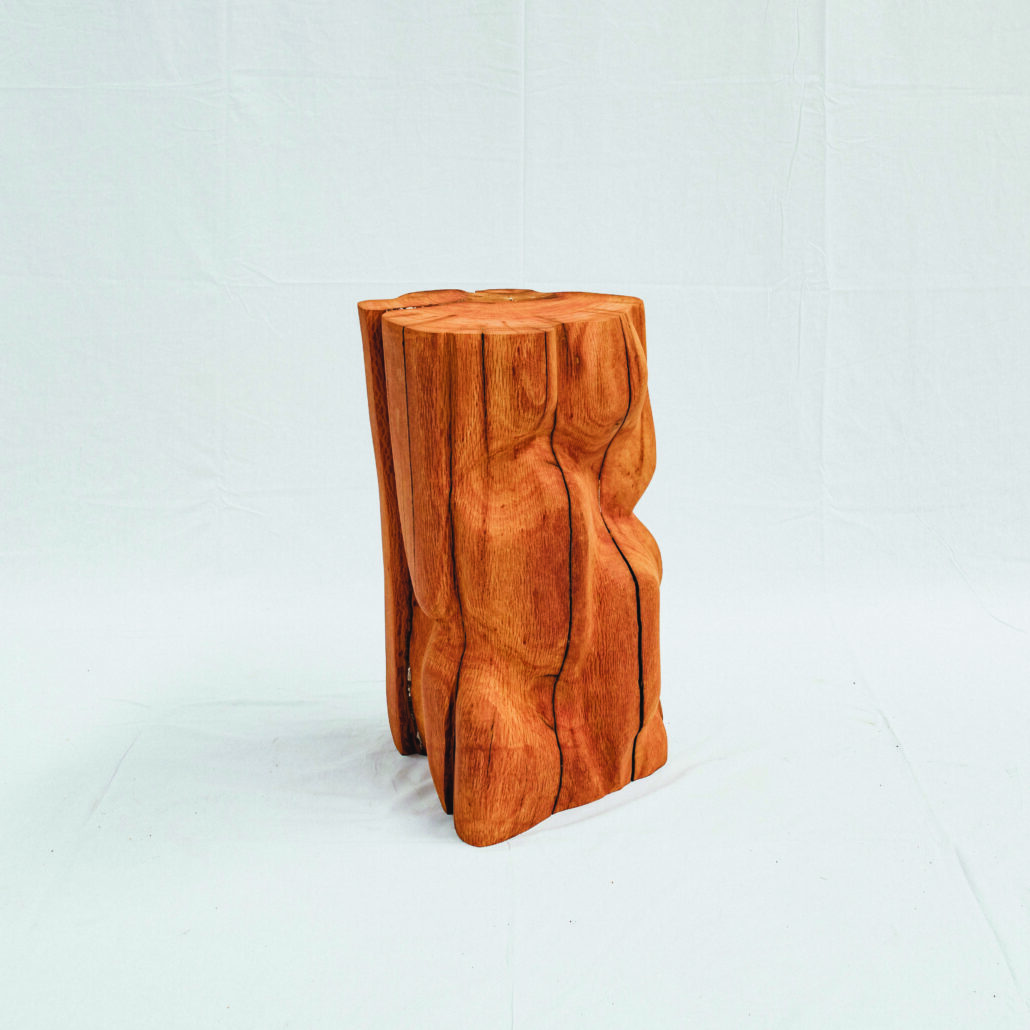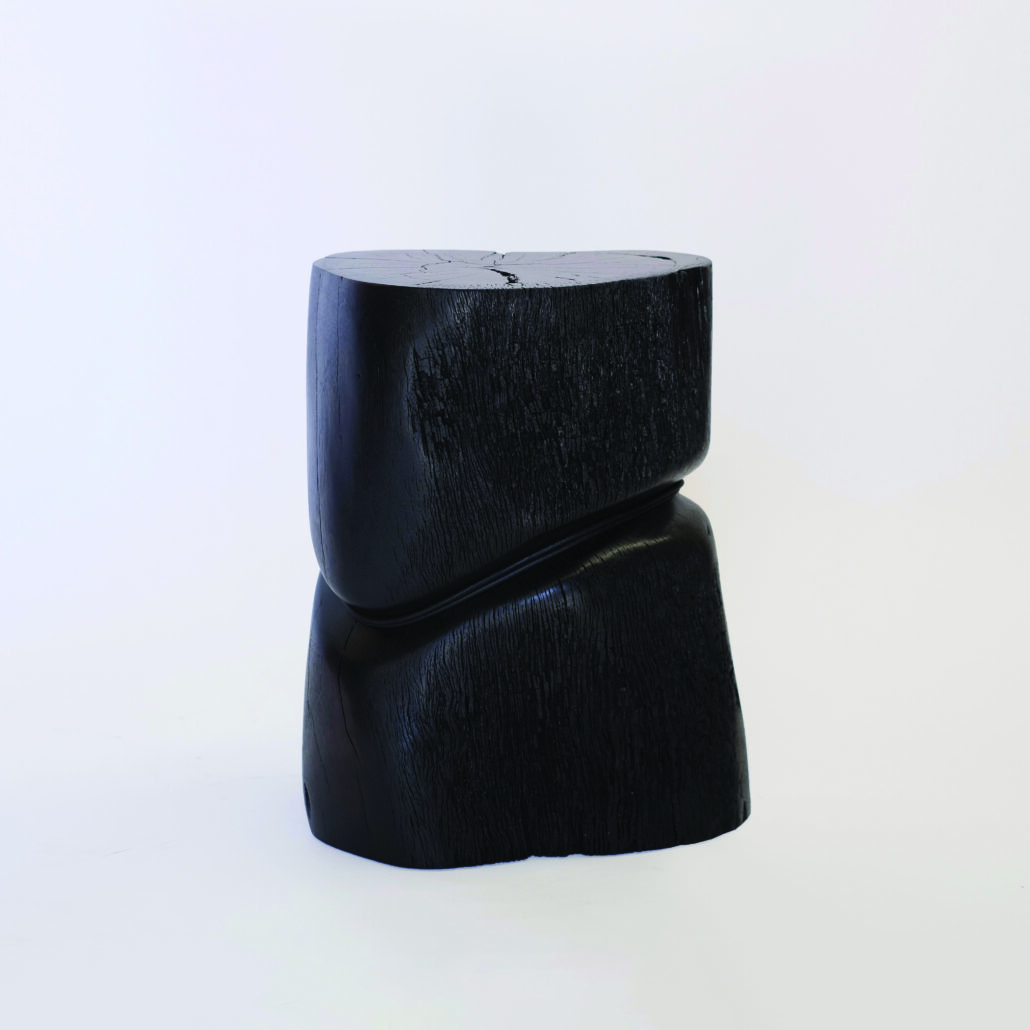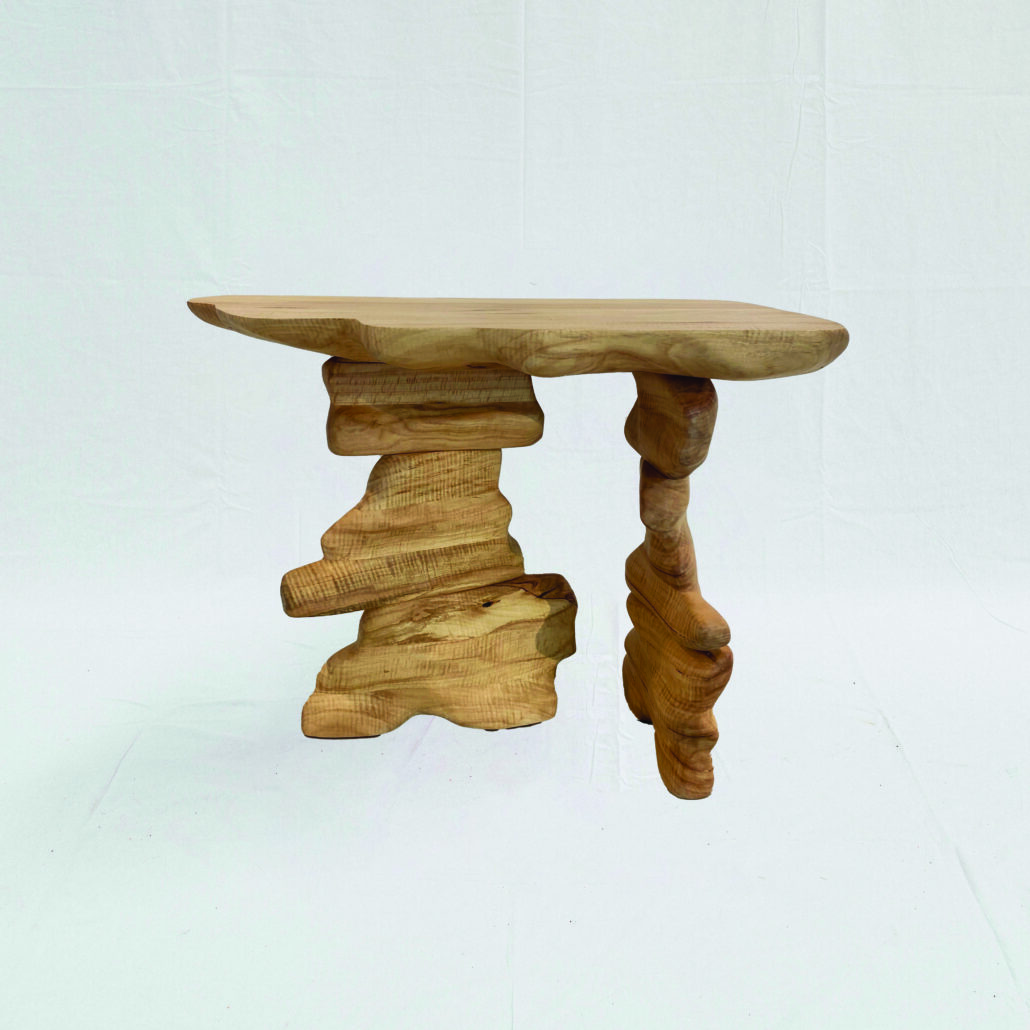Above: 1 / Artist Brent Comber in front of Shell sculpture. PHOTO: RAEFF MILES FOR GRYPHON DEVELOPMENT
Olive Gill-Hille spends an inordinate amount of time searching for “Goldilocks timber,” as she puts it. With a chainsaw, her partner and a teenage Labrador in tow, the artist scours farming properties across her home state of Perth (with the farmers’ permission, of course) for ethically felled trees from which to create her exquisite sculptural and functional pieces. The timber she’s looking for can’t be too green, too cupped, too awkwardly positioned such that the natural drying process hasn’t quite taken hold. It can never be too dry. Craning these rare finds into the back of a small truck, she takes them back to her studio, where a special kind of transformation takes place.
Carving, sanding, and oiling the huge slabs of timber herself – no mean feat physically – the resulting smooth, organic forms nod to the bodily, the feminine, as well as our connections to nature, life, death, and decay. They are a very real extension of the artist’s hand, intuition, experience and dedication to her practice. “Sometimes they reflect on my own touch and body, almost like a form of self-portraiture,” says Gill-Hille. “Other times they’re examining relationships and human interactions.”
Since such a large part of Gill-Hille’s practice is in sourcing and salvaging (though she does work with new timbers as well), the personal narratives of the materials are also a key element, as they tell the stories of the places from which they’ve come. Her functional works elevate the utilitarian role of furniture – pieces become more intimate, more interactive in their form and function. “Throughout all my practice the role of the viewer and the role of touch is crucial to activating the works,” she says. “I love that timber is this material that every person is so familiar with. We all recognise its texture, its warmth. We all have an association and history attached to it.”
Gill-Hille notes her solo exhibitions at Sydney’s Gallery Sally Dan-Cuthbert as major milestones to
date. Her 2021 debut TRUNK and 2023 sophomore Asymptote were both exceptionally well received by
collectors and curators alike and saw the artist’s work find places in significant collections in Australia and abroad. Gill-Hille was also a finalist in the 2023 Ramsay Art Prize at the Art Gallery of South Australia, an exciting award championing the work of artists under 40.
Making in all its forms has always been there for this artist. She completed a Bachelor of Fine Art at the Victorian College of the Arts in 2015, where she specialised in sculpture. In the past seven years Gill- Hille has dedicated herself to wood, a material that seemed daunting at first. “Wood was always a bit intimidating because it requires a very particular set of skills, knowledge and tools,” she says. “I found that quite overwhelming, but I was always really drawn to it.”
Above: Pale Shadows sculpture. PHOTO: CARRIE MARSHALL
She undertook an Associate Degree of Furniture Design at RMIT in 2018, where her passion for timber truly took hold. “It was such an exciting leap for my practice, like learning a new language.” In fact, Gill-Hille best describes her relationship with her materials as an ongoing conversation. “There’s already so much history in a material like timber, a whole story to hear about the tree or the object it was before,” she says. She also loves its transformative qualities: “It can go from being something of the earth, gnarled and rugged. And then, with time and work, it can become a totally different object, almost a different matter.”
2024 brings an exciting new body of work for exhibition in her home state with Gallery Sally Dan- Cuthbert. “A lot of my practice is based around place, so it feels like it’s time to showcase pieces in the area I make the work,” she reflects. Some of the new works are made from recycled materials. She is thinking about how we attribute so meaning and value into the objects around us, not necessarily because of their dollar worth, but because of our personal histories with them. The recycled materials are meditating on these ideas, exploring the different life cycles and forms objects can take, while still retaining the essence and meaning of their past lives. We can’t wait to see where these new conversations with wood lead this exciting young artist.
Above: 1 / Alder cubes. PHOTO: RAEF GROHNE 2 / Soma Table and Bench. PHOTO: YUSHiiN LABO 3 / Island Table. PHOTO: DYLAN HAMM

